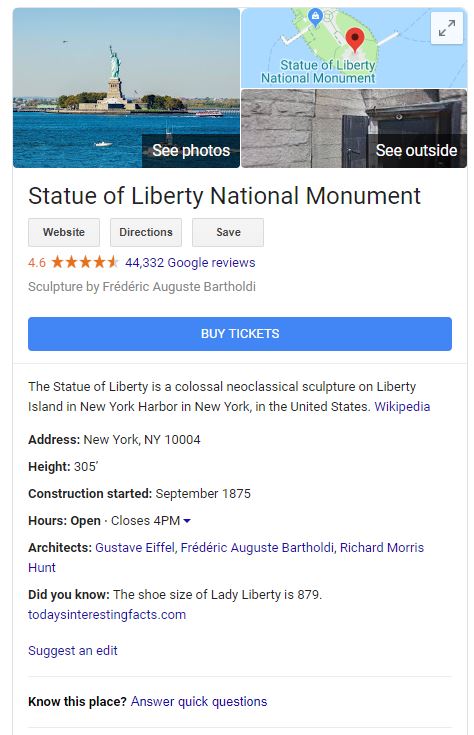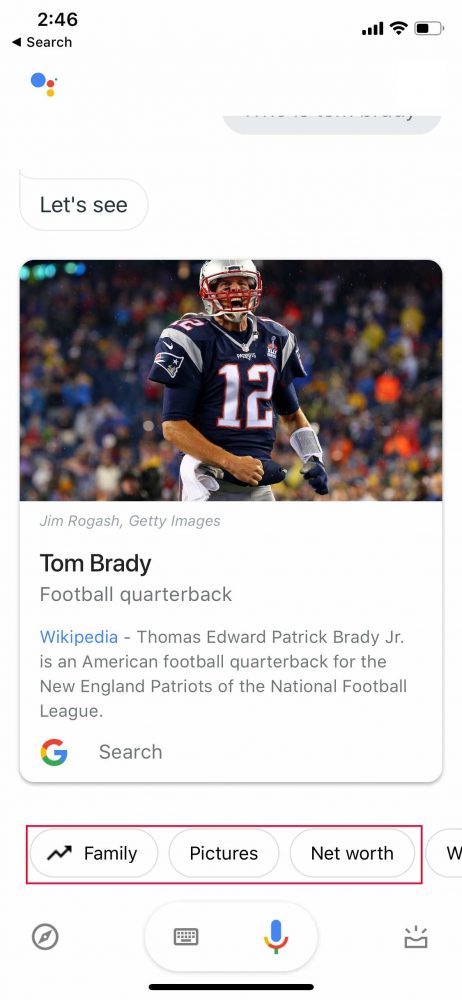In its 20 years as a company, Google has revolutionized the way we find information. The search engine giant is in the midst of rolling out even more changes – it’s moving from answers to journeys, shifting away from queries, and, now, the shift to visual searching.
Strings to Things to Concepts
One easy way to understand Google’s search technology evolution is through three main ideas: strings, things, and concepts. As we move into the concepts phase of internet search, it’s helpful for us to review the steps that came first.
1. Strings
When Google began, it was all about keywords. Those were the “strings”—the words (and sets of words) that helped Google provide users with the most relevant, high-quality information. We can’t overstate how revolutionary keyword technology was, but keyword-based search placed most of the responsibility on the user to find the right information. If you didn’t enter the right keywords, you wouldn’t see the search results you wanted to see.
2. Things

After a while, Google’s algorithms got smarter. With the launch of the Knowledge Graph in 2012, Google began to understand what people meant when they used fuzzy search criteria, and began to steer them toward the stronger searchable terms and relevant information. Put simply, it was a progression from basic keywords to semantically related keywords and ideas.
The Knowledge Graph enabled Google to aggregate millions of search queries to understand what users were actually interested in when they used certain search terms. This 2012 blog post laid out Google’s hopes for the future:
“We’ve always believed that the perfect search engine should understand exactly what you mean and give you back exactly what you want. And we can now sometimes help answer your next question before you’ve asked it, because the facts we show are informed by what other people have searched for.”
3. Concepts

In 2018, Google announced it would be focusing not just on words, but also on images and other visual content. With this shift, Google hopes to move from answering users’ questions to being their personal assistant. Instead of just responding to your searches, Google will pick up where you leave off, taking users on an information journey. One of the biggest changes since 2012 is that more than half of all Google searches are coming from mobile devices. The visual shift we’re seeing specifically targets those mobile users. In 2018 we also saw Google’s understanding of content and query intent reach a whole new level.
Good Content vs. Great Content
We know now that Google is moving in a more visual direction, focusing on the mobile experience and integrating images, videos, and other visual content. But what does this mean for SEO? The good news is that the fundamentals remain the same:
- High-quality content
- Relevancy
- Authoritative perspective
- Answering users’ questions useful
Google’s algorithms will only continue to sharpen their accuracy in finding the best, most relevant visual content. This is still about finding content that addresses user needs the best. This visual shift means that SEO experts will need to help content creators create and maintain relevancy. It will also be critical that content creators put out fresh content on a regular basis, as the algorithms will prefer sites that are frequently updated with highly query relevant text and visual information.
Google’s understanding of content appears to be exponential in nature, not linear. In other words, their algorithmic abilities tend to leap rather than crawl, and the next few years will see dramatic improvements in those abilities. This advanced understanding means good quality content won’t cut it anymore. Rather, sites that want to perform well in search rankings will need truly outstanding content written by experts. In some industries, this expert-level content is already necessary.
Next Steps for SEO
As Google paves the way for a drastically different search experience, here are a few concrete steps SEOs can take to stay relevant in search.
1. Understand the basics
This means having a thorough understanding of how to create high quality and relevant titles, H1 tags, and body content. For visual content, context is key. Stock photos likely will not cut it anymore; you’ll need images that are highly related to your specific content and unique on the web.
2. Consider the user’s journey
Create Content that includes visuals that are optimized for search. Include captions for your visual content that show how those images are a core component of your content. This will help your images/photos perform better in image searches and help users find the information they want quickly and easily.
3. Build visually
For higher visibility and accessibility, optimize your product images for Google Lens. Don’t rely on a user’s ability to type in specific search terms to find your product online. Google Lens shows users relevant images automatically, especially ones with direct links back to product pages. Google is also building its own AMP stories—AI-constructed visual experiences that immerse the user in text, video, and photos. With highly optimized visuals and text, Google may pull your authoritative content into one of these stories.
Differentiating between good and truly world class content used to be a person’s job. Now it’s the purview of intelligent and powerful algorithms. As we move into the future of search, SEO experts need to stay rooted in the basics of high-quality content, all while remembering that “content” is much more than just words on a page.


I would say the biggest shift, on the business front, is the need for mom and pop / local businesses to kick up their content game. Hopefully curbing the age of scraped and spun content.
Great post, thanks for sharing. During Google updates the past several years I’ve always seen that it’s all about content. In a nutshell, it’s the major element that reflects to what extent the user is satisfied with what Google gave him. If you have good content you will have good results.
Great post with a lot of information. Many many thanks for sharing with us.